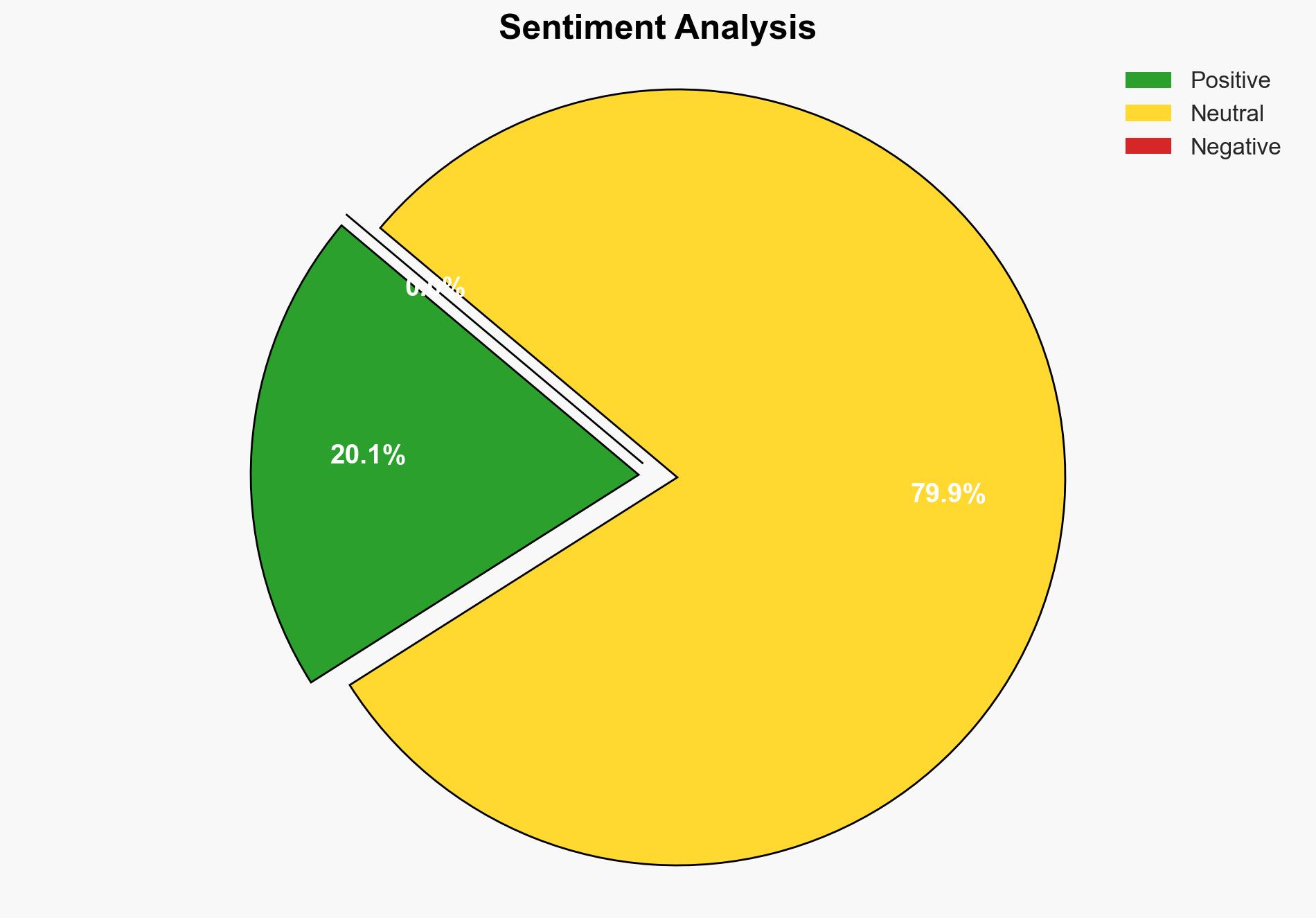SpaceX Crew-10 folds traits hopes into origami crane zero-g indicator – collectSPACE.com
Published on: 2025-03-15
Intelligence Report: SpaceX Crew-10 folds traits hopes into origami crane zero-g indicator – collectSPACE.com
1. BLUF (Bottom Line Up Front)
The SpaceX Crew-10 mission, part of NASA’s commercial crew program, has introduced a unique cultural symbol as its zero-gravity indicator: an origami crane. This choice reflects a blend of international collaboration and cultural heritage, symbolizing peace and hope. The mission involves astronauts from the United States, Japan, and Russia, highlighting ongoing international cooperation in space exploration. The origami crane, crafted by a small business owner, underscores the mission’s emphasis on human creativity and unity.
2. Detailed Analysis
The following structured analytic techniques have been applied for this analysis:
General Analysis
The SpaceX Crew-10 mission’s selection of an origami crane as a zero-g indicator is significant for several reasons. It represents a deep cultural tradition from Japan, symbolizing peace and hope, especially poignant in the context of international space collaboration. The mission’s crew includes individuals from diverse backgrounds, fostering a spirit of unity and shared purpose. The origami crane’s creation by a small business owner in the United States highlights the integration of grassroots creativity into high-tech space missions. This choice may enhance public engagement and support for space exploration by emphasizing cultural and artistic values.
3. Implications and Strategic Risks
The use of cultural symbols in space missions could strengthen international partnerships by promoting mutual respect and understanding. However, there is a risk of cultural misinterpretation or appropriation if not handled sensitively. The mission’s success could bolster public and governmental support for continued investment in international space collaboration. Conversely, any failure or mishap could strain diplomatic relations and impact future cooperative efforts.
4. Recommendations and Outlook
Recommendations:
- Encourage the inclusion of cultural symbols in future missions to enhance international collaboration and public engagement.
- Develop guidelines to ensure cultural symbols are used respectfully and appropriately in international contexts.
- Promote educational initiatives that highlight the role of cultural heritage in space exploration.
Outlook:
In the best-case scenario, the mission’s success and positive reception of the origami crane could lead to increased international cooperation and public interest in space exploration. In the worst-case scenario, any cultural missteps or mission failures could damage diplomatic relations and public support. The most likely outcome is a continued trend of integrating cultural elements into space missions, fostering a more inclusive and globally representative space exploration community.
5. Key Individuals and Entities
The report mentions significant individuals such as Takuya Onishi, Anne McClain, Nichole Ayers, and Kirill Peskov. The mission involves collaboration between organizations like SpaceX, NASA, and international space agencies from Japan and Russia.




